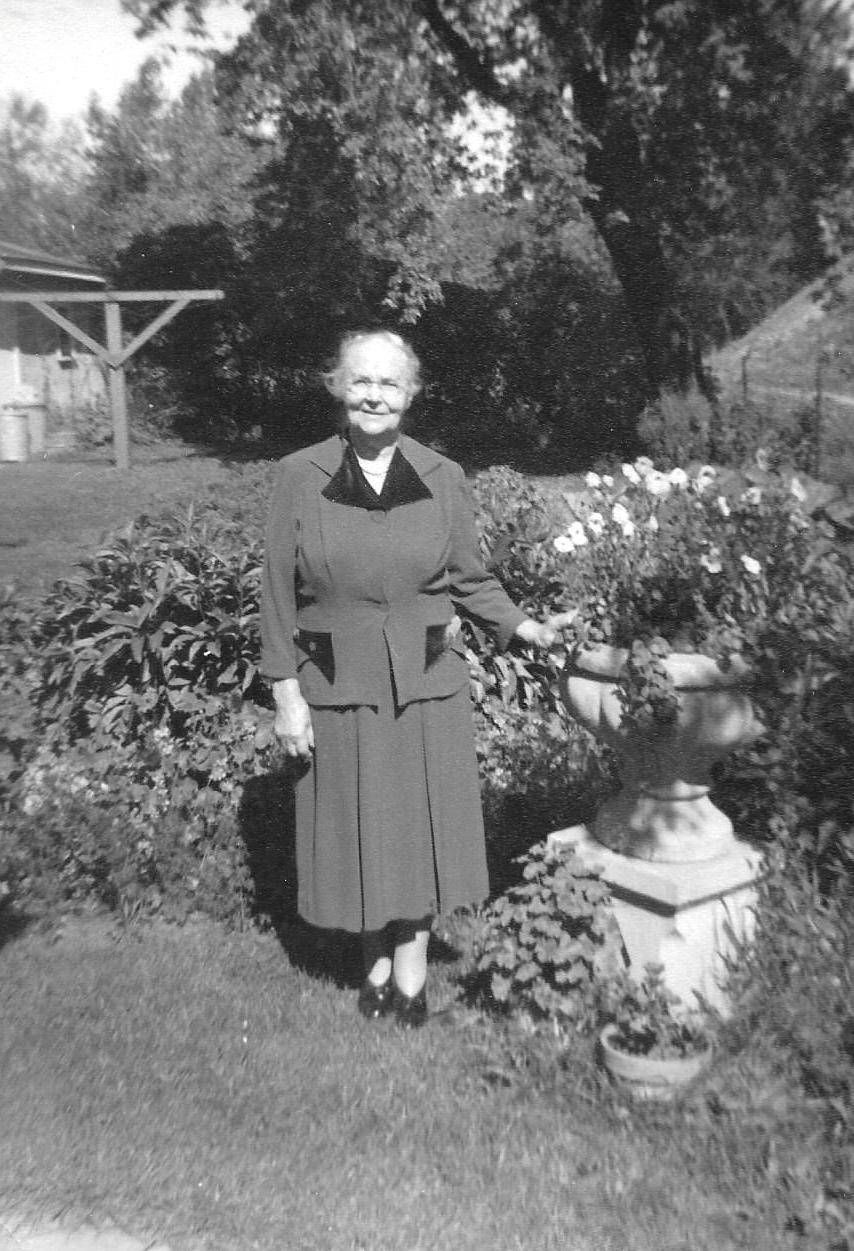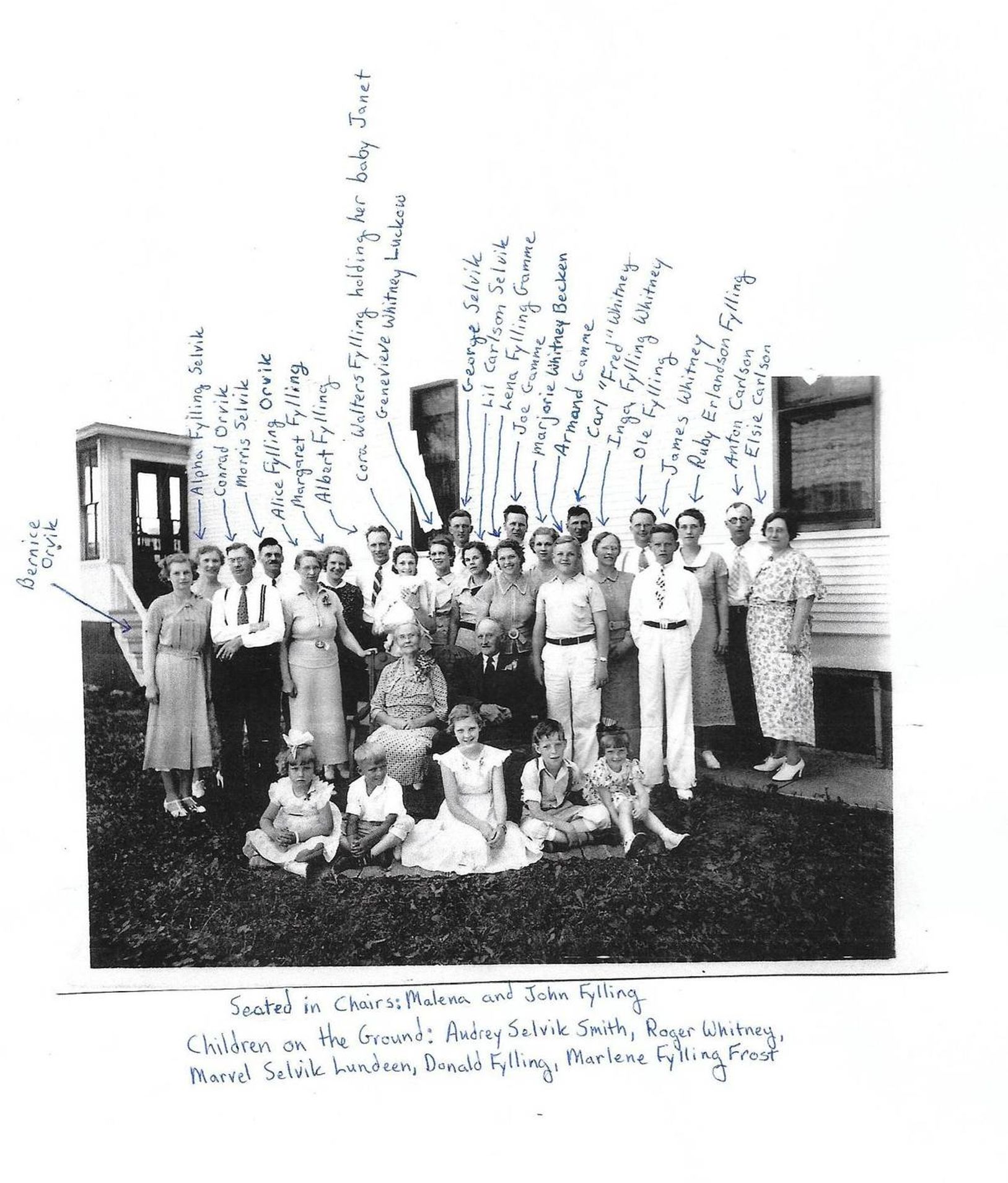Dear Minnesota - Victoria Lynn Smith
Victoria Lynn Smith shares a letter about of her mother-in-law's favorite relatives, Malene Fylling, a Norwegian immigrant who came to Minnesota in 1903

Dear Minnesota,
My mother-in-law, Audrey Smith, loved learning about her ancestors. In her 60s and 70s, she took genealogy classes. In her 80s a broken leg required surgery and rehab at a nursing home. She balked at being in the nursing home. To help her pass the days, I interviewed her about her life. When she returned home, we continued working on her life story and used her genealogy research to add stories about her ancestors.
One of Audrey's favorite relatives was her paternal great-grandmother, Malene Fylling. Audrey remembered her great-grandma as "the sweetest old lady" who was always happy. When Audrey traveled with her parents to Crookston, Minnesota, Malene doted on her, giving her cookies, asking her questions, and telling her stories. When Audrey and her parents visited Crookston for Christmas, they ate lutefisk cooked by Malene. Audrey's great-grandparents had a large house, so they put their Christmas tree in the middle of the living room. After dinner the family held hands, circled around the tree, and sang Norwegian and English songs, blending their old and new worlds.
Malene was born in Geiranger, Norway, on September 14, 1863. She had an eighth-grade education. On May 7, 1886, she married John Fylling. They had seven children in Norway, but a daughter died before they emigrated. I wonder what it was like for Malene to know that after she left Norway, she would never again visit her daughter's grave. After they settled in Crookston, she and John had two more children.
In June 1903, Malene, John, and their six children,16, 12, 10, 7, 3, and 8 months, arrived in Quebec on the SS Bavarian, a steamship owned by Allan Line. Steamships were faster and more comfortable than sail ships but imagine crossing the Atlantic Ocean with six children. From Quebec they traveled to Winnipeg and applied for entry to the United States. Their destination was Crookston, where John's brother, Ole Fylling, lived. Ole wrote to John about opportunities in Crookston. Having family in Minnesota eased the pain of leaving their families behind.
By 1920, Malena and John were naturalized citizens. Economic hardship motivated Malene and John to leave Norway. During the second half of the 1800s, Norway's economy deteriorated. Steamships made it easier for Europeans to immigrate but also caused widespread unemployment among Norway's shipbuilders, dockhands, and sailors. Farmers, who never had it easy in Norway, were undercut by low-priced grain from Europe because of cheap transportation. Audrey often said, "The Norwegians had nothing but rocks." She heard this repeatedly from her Norwegian relatives, who told her how difficult farming was in Norway.
Malene was forty when she came to Minnesota. Her status on the U.S. Census was always "wife" and "homemaker." She didn't need to work outside the home she and John owned by 1910. John worked as a carpenter and later owned a grocery store. After John died in 1937, one of his sons ran the store. Another son and a son-in-law owned a creamery. Their youngest daughter became a bookkeeper and worked for the school system then at her brother's creamery. Their daughters married well and had comfortable lives. Malene and John's dream of a better life in Minnesota for themselves and their children became reality.
Malene died in 1960 at ninety-seven, and she was buried with family at Oakdale Cemetery in Crookston. Years later Malene and John's home was either razed or moved (along with other homes) because the Red Lake River, which ran behind their home, flooded often. "Imagine living on the bank of a river—a good-sized river—and watching those kids," Audrey said—shuddering as she pictured Malene raising children near the river. But Malene never lost any of her children to the river. Her census status as "wife" and "homemaker" may not be exciting family history, but Malene was an important force in the lives of three generations of children, most of whom made Minnesota their permanent home.



